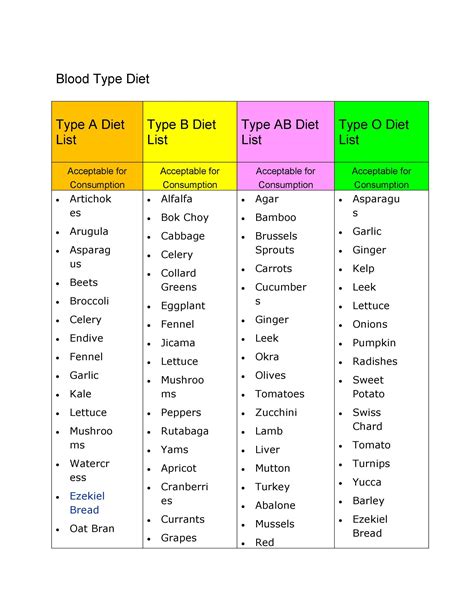Discover the fundamentals of a low-FODMAP diet, learn to recognize high-FODMAP foods, and effectively implement and assess the impact of low-FODMAP meals.
Understanding Low-Fodmap Diet
Contents
Understanding Low-Fodmap Diet
The Low-FODMAP diet is a way of eating that has been shown to help people with digestive issues such as irritable bowel syndrome (IBS). FODMAPs are certain types of carbohydrates that are poorly digested in the small intestine and can be fermented in the colon, leading to symptoms like bloating, gas, and abdominal pain. By reducing intake of high-FODMAP foods, many people find relief from these uncomfortable symptoms.
When following a Low-FODMAP diet, it’s important to focus on consuming foods that are low in these fermentable carbohydrates. This means avoiding foods like onions, garlic, certain fruits, wheat, and dairy products. Instead, the diet emphasizes foods that are naturally low in FODMAPs, such as meats, fish, eggs, tofu, most grains, and certain fruits and vegetables.
It’s important to note that the Low-FODMAP diet is not meant to be a long-term eating plan. In fact, it’s considered more of an elimination diet, where certain high-FODMAP foods are temporarily removed from the diet to see if symptoms improve. Once symptoms have subsided, foods are then systematically reintroduced to determine which ones may be triggering symptoms.
Understanding the Low-FODMAP diet and how it works can be a helpful first step for anyone considering trying this approach to manage digestive issues. By being aware of which foods are high in FODMAPs and which ones are safe to eat, individuals can begin to tailor their diet to better support their digestive health.
Overall, the Low-FODMAP diet is a promising approach for individuals struggling with chronic digestive discomfort and can provide valuable insight into the relationship between diet and digestive symptoms. With proper education and guidance, many people find relief and improved quality of life through following a Low-FODMAP eating plan.
Identifying High-Fodmap Foods
When following a low-Fodmap diet, it is crucial to be able to identify high-Fodmap foods. This type of diet focuses on eliminating or reducing foods that are high in fermentable oligosaccharides, disaccharides, monosaccharides, and polyols. These types of carbohydrates can be difficult for some people to digest, leading to symptoms such as bloating, gas, and stomach pain.
Some common high-Fodmap foods to be aware of include fruits such as apples, cherries, and pears, which are high in fructose. Additionally, certain vegetables like onions, garlic, and asparagus contain high levels of oligosaccharides. It’s also important to consider high-Fodmap dairy products such as milk, yogurt, and ice cream, as they may contain lactose, a type of disaccharide. Lastly, legumes like chickpeas, lentils, and black beans are high in oligosaccharides and polyols, making them potential triggers for digestive issues.
It’s essential to carefully read food labels and be aware of hidden high-Fodmap ingredients such as high-fructose corn syrup and artificial sweeteners like sorbitol. It’s also important to note that portion sizes can make a difference, as some high-Fodmap foods may be tolerated in smaller amounts.
By understanding and being able to identify high-Fodmap foods, individuals can take proactive steps in managing their symptoms and customizing their diet to fit their specific needs.
Planning Low-Fodmap Meals
When planning low-Fodmap meals, it’s important to understand the key principles of the diet. This involves consuming foods that are low in fermentable oligosaccharides, disaccharides, monosaccharides, and polyols. These include fruits such as berries, citrus fruits, and bananas; vegetables such as spinach, bell peppers, and carrots; and protein sources like chicken, fish, and tofu.
Another important aspect of planning low-Fodmap meals is to be mindful of portion sizes. While certain foods may be considered low in Fodmap, consuming large portions could still lead to digestive discomfort. Therefore, it’s essential to practice portion control and balance the different food groups in each meal.
One effective way to plan low-Fodmap meals is by keeping a food diary. This can help in identifying trigger foods and monitoring the response to certain meals. By noting down the ingredients and portion sizes of each meal, individuals can better understand their dietary needs and make necessary adjustments.
Furthermore, incorporating variety into low-Fodmap meals is key to ensuring adequate nutrient intake. This can be achieved by exploring different recipes and experimenting with various low-Fodmap ingredients. By doing so, individuals can prevent food boredom and maintain a well-rounded diet.
Implementing the Low-Fodmap Diet
Implementing the low-FODMAP diet can be a challenging but highly rewarding experience for individuals suffering from irritable bowel syndrome (IBS) or other gastrointestinal disorders. It involves making significant changes to your diet in order to reduce the intake of certain types of carbohydrates that can trigger digestive symptoms.
One of the first steps in implementing a low-FODMAP diet is to identify high-FODMAP foods and eliminate them from your diet. This involves avoiding foods such as wheat, onions, garlic, legumes, and certain fruits and vegetables that are known to contain high levels of FODMAPs. It’s important to carefully read food labels and be mindful of portion sizes to ensure you are not inadvertently consuming high-FODMAP foods.
Once you have eliminated high-FODMAP foods from your diet, the next step is to plan low-FODMAP meals that are both nutritious and delicious. This may involve experimenting with new recipes and trying out alternative ingredients to find suitable substitutes for high-FODMAP foods. Meal planning and preparation are key aspects of successfully implementing a low-FODMAP diet, as it allows you to maintain a balanced and varied diet while avoiding trigger foods.
Implementing a low-FODMAP diet also requires evaluating the effects it has on your digestive symptoms. Keep track of any changes in your symptoms, such as bloating, gas, abdominal pain, and bowel movements, to determine if the diet is having a positive impact on your overall gut health. It’s important to be patient and give your body time to adjust to the new diet, as it can take several weeks to see noticeable improvements.
In summary, implementing a low-FODMAP diet involves identifying high-FODMAP foods, planning low-FODMAP meals, and evaluating the effects of the diet on your digestive symptoms. It may require some trial and error, but many individuals find relief from their gastrointestinal symptoms by following a low-FODMAP diet. Seek guidance from a registered dietitian or healthcare professional to ensure you are implementing the diet safely and effectively.
Evaluating the Effects of Low-Fodmap Diet
After following a low-FODMAP diet for an extended period of time, it’s important to assess the effects it has had on your overall well-being. This involves evaluating changes in symptoms, such as bloating, gas, and abdominal pain. Keeping a food and symptom diary can help in tracking any improvements or setbacks. It’s also crucial to consider any adjustments made to the diet during the evaluation period, as well as any potential triggers encountered.
Another aspect to consider when evaluating the effects of a low-FODMAP diet is any impact it may have had on your mental health. IBS and other digestive issues can often take a toll on a person’s emotional well-being. If following a low-FODMAP diet has resulted in reduced anxiety and improved mood, it’s a significant indicator of the diet’s effectiveness.
In addition to monitoring physical and emotional symptoms, it’s beneficial to assess any changes in energy levels and overall quality of life. Has the low-FODMAP diet led to increased energy and vitality? Have you been able to engage in activities and social events with more ease and comfort? These are important questions to address when evaluating the overall effects of the dietary changes.
Ultimately, evaluating the effects of a low-FODMAP diet involves considering all aspects of your health and well-being. It’s essential to take a holistic approach and not solely focus on digestive symptoms. By carefully assessing each aspect and noting any improvements or setbacks, you can gain valuable insights into the impact of the low-FODMAP diet on your life.












